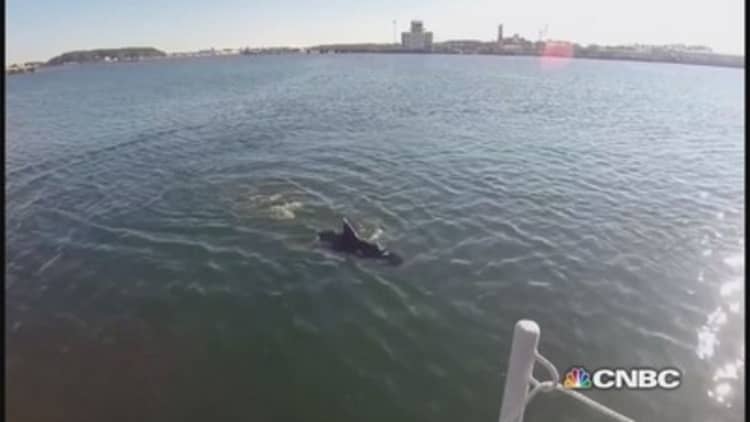
The U.S. Navy has finished testing an underwater drone that looks and acts like a big fish.
The robotic GhostSwimmer can be used for a variety of tasks, and in recent tests the Navy used it to collect data on tides, currents, wakes, and weather conditions. A Massachusetts-based engineering firm called Boston Engineering designed and built the device, using the principles of "bio-mimicry"—designing machines that imitate the features and behavior of plants and animals.
Fish have the ideal bodies for maneuvering underwater, which helps the GhostSwimmer overcome some of the flaws of conventional underwater craft. By copying the way fish are shaped and how they swim, the drone can move more easily through the water, fit into tight spaces, and avoid detection. Fish-shaped drones can perform inspections, surveillance and reconnaissance in low-visibility environments or in instances that might be too dangerous for divers, according to a report released by the Navy.
Read More
The drone is quieter than machines that use propellers. The body of the "shark" is five feet long and weighs about 100 pounds. It can swim to a depth of 300 feet, has a long battery life, and can either move on auto-pilot or be controlled with a laptop that connects to the fish through a 500 foot tether.
The drone is part of the Navy's Silent NEMO project, which aims to build more machines based on bio-mimicry, according to the report.



